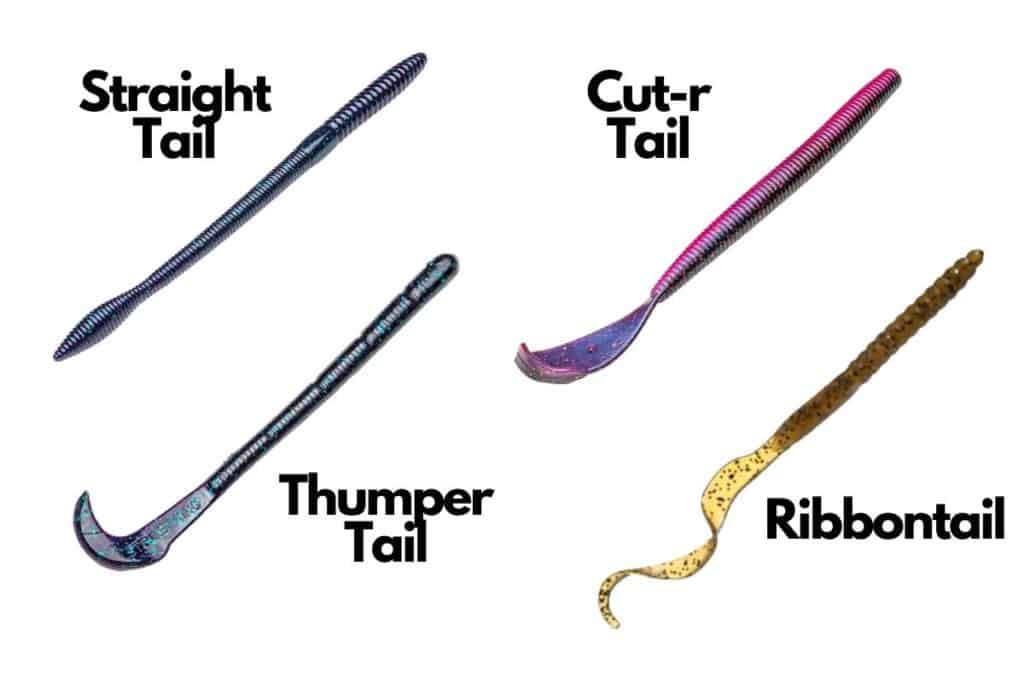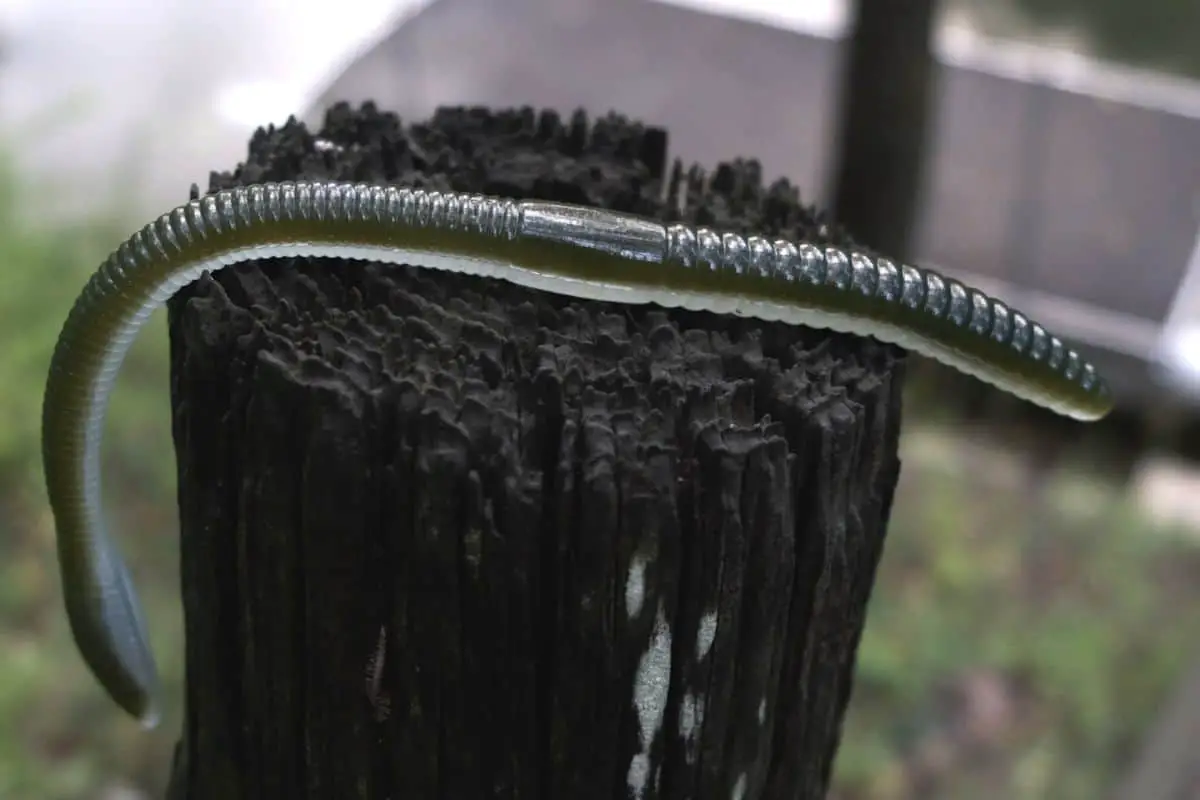The soft plastic worm has changed the fishing world ever since Nick Creme first concocted his special formula in 1949. The Creme Wiggle Worm hit the consumer market in 1951. Millions of plastic worms have been used by anglers since.
The soft plastic worm can be used all year and in any situation. It excels in thick cover like wood and vegetation as well as on hard rocky bottom compositions.
The following criteria are situations that I look for when deciding whether or not to throw a plastic worm.
Plastic Worms Excel in Thick Cover
When anglers are fishing lots of wood or vegetation, the soft plastic worm is a natural choice.
Its slender design allows it to slip through the thickest and nastiest places. When Texas-rigged, the lure is about as snag-free as a bait can get. My presentation will vary slightly between wood and vegetation.

When using a plastic worm in wood and brush, I often am using a vertical or “dropping” approach. I want that worm to slip through all the branches and slide over them as I work it out.
Most often the bite will occur on the drop and right after the lure changes direction when hitting a branch.
When fishing vegetation, it can also be dropped into weedbeds, but this is when I like to swim the plastic worm. Bass hanging out in dense vegetation can be challenging to locate. Swimming the worm allows anglers to cover more water and let the lure activate the lateral lines of the bass and sense its vibration.

The Different Styles of Worms and When You Should Throw Them
Like most things in bass fishing, the plastic worm has many shapes and sizes.
Most of the variations deal with the tail design.
Common models include the straight tail, ribbontail, cut-r, and thumper tail. Each of these will work in almost any condition you run across, but they all have situations that best suit them.
| Situation | Straight Tail Worm | RibbonTail Worm | Cut-R Tail Worm | Thumper Tail Worm |
| Finesse | X | |||
| Swimming | X | X | X | |
| Vegetation | X | X | X | X |
| Low Visibility | X | X | X | |
| Wood | X | X | ||
| Trailer for Various Lures | X |
Fishing the Straight Tail Plastic Worm
Like the other versions, the straight tail will shine when Texas-rigged, but this model is dynamite when used on a shaky head jig.
Its upright positioning is visible to fish from a distance and it looks extremely realistic.
I prefer to use Elaztech plastic on my shaky head presentations because it is buoyant. This guarantees that the tail will stand up straight.
(Here is an article on the best shaky head worms.)
A shorter straight tail worm has also been an excellent trailer for my bladed jigs. The below video will explain this in detail.
Ribbontail Worms and When to Use Them
The ribbontail offers a different action than any other worm on the market.
No matter what speed the lure is retrieved, the enticing corkscrew action of the tail adds a life-like movement.
This worm variation really shines when swimming through the water column. It is a favorite of mine when working through sparse vegetation.
It can cover a lot of water and really “searches” for bass.
If I see lots of grass beds then a ribbon tail worm is high on the list of go-to options.
Cut-R Tail Worms and When to Throw Them
I like to think of the cut-r tail like a little propellor. It is not as subtle as the ribbontail’s sliding and corkscrew action.
It definitely provides a different thump and is something the lateral line of the bass will surely detect.
Cut-r worms are also favorites for a swimming retrieve. I also like to use them in stained-to-dirty water because of the added vibration.
There are multiple versions of the cut-r tail on the market and it has a dedicated following.
Here is an article that explains the best gear ratios to use for each bass fishing technique.
Thumper Tail Soft Plastic Worms
I classify these basically the same as the cut-r tail worms. These variations often have a slightly larger tail, but the situation in which I would use them is almost identical to the cut-r tail.
Often a thumper tail will be offered in longer lengths as well.
Another way to think about this worm style is with the same mindset as you would a spinnerbait. It can be fished in the same manner, but the thumper tail can be dropped and let sit at any point in the retrieve – unlike a spinnerbait.
It swims nicely down the sides of laydowns and along docks.
This tail design, like the cut-r, is effective in water that has some color to it.
When the weather warms up, I like to use the versions that are larger than the traditional 7” models. Hot weather increases the metabolism of the bass and bigger meals often trigger bigger bites.
Good luck out there and make sure to encourage someone today. You never know how you may change their life forever.
Isaiah 6:8

